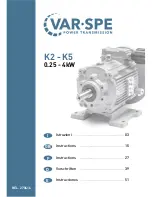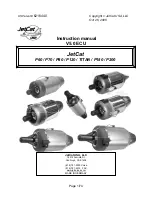
EGR OPERATION
PRELIMINARY
The following limits apply to the EGR control valve logic:
When Engine Coolant Temperature (ECT) is below 18 C (64 F), independent of speed
and load, the EGR is disabled.
When ECT is below 60 C (140 F) at low loads, the EGR is disabled to avoid buildup
of condensed exhaust products (such as hydrocarbons and soot) in the EGR cooler and
other downstream components.
When torque is less than 5% of available, the EGR is disabled to avoid diverting exhaust
gases when needed for engine braking.
When Intake Air Temperatures (IAT) is greater than or equal to 100 C (212 F), EGR is
disabled.
NOTE:
The engine diagnostics use an IAT greater than or equal to 100 C (212 F) as an
indication of an EGR cooler failure.
At engine speeds lower than 1150 rpm, the EGR is turned off.
During starting, the EGR is turned off for better startability.
When the air mass flow is insufficient for the speed and load, the EGR is turned off to
control smoke.
At light loads, the EGR is turned off.
The EGR is turned off at about 1740 m (5708 ft).
NOTE:
The DDEC Engine Control Unit uses barometric pressure to estimate altitude. The
average barometric pressure for an altitude of 1740 m (5708 ft) is 82.0 kPa (24.2 in. Hg).
If the EGR temperature sensor fails, the EGR is shut off.
If the self-diagnostics indicate a malfunction of the EGR control valve, the EGR is shut off.
3-2
All information subject to change without notice.
(Rev. 5/05)
7SE940 0505
Copyright © 2005 DETROIT DIESEL CORPORATION
Содержание MBE 400
Страница 1: ......
Страница 2: ......
Страница 4: ......
Страница 97: ......
Страница 98: ......
Страница 99: ......
Страница 100: ......
Страница 103: ......
Страница 105: ......
Страница 107: ......
Страница 108: ......
Страница 109: ......
Страница 110: ......
Страница 111: ......
Страница 112: ......
Страница 113: ......
Страница 114: ......
Страница 115: ......
Страница 116: ......
Страница 117: ......
Страница 118: ......
Страница 119: ......
Страница 121: ......
Страница 122: ......
















































